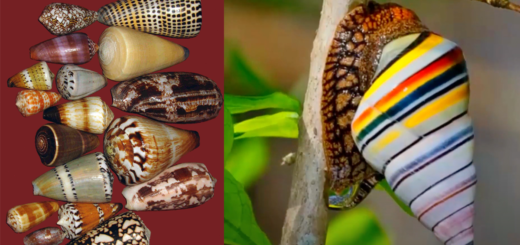The World of Rare, Weird, and Even Cute Venomous Mammals
This time, we’re looking at facts about rare venomous mammals.
When dinosaurs disappeared some 65 million years ago, it gave the mammals the opening to diversify across the planet. Today, there are around 4,500 species of mammals living in every environment on Earth. However, very few mammals are known to be venomous. We’ll look at the six we know of.
Humans are mammals from the subgroup called primates. Although humans are not technically venomous mammals, we sure know some people who seem to spew venom. Among this category of spiteful or malicious verbal venom, we can list many a politician, that’s for sure.
Venomous versus Poisonous
For the purpose of this article, we’re focusing on venomous mammals as in the ability to produce venom, a toxic substance injected into an enemy. Usually, venom is injected through biting or stinging. Thus, it differs from poison, a toxic substance that can be passively absorbed or ingested. For example, many bees are venomous but not poisonous because they actively inject toxins with their stinger.
A few animals can be both venomous and poisonous, but it’s rare. For example, the psychedelic looking blue-ringed octopus falls into this category. If you eat one, you might die from tetrodotoxin poison. Plus, it can also inject venom 1,000 times more potent than cyanide with its beak.
Our Closest Venomous Mammal Relative
Among mammals, human’s closet venomous relative is the slow loris, a nocturnal primate from Asia. Although a slow loris looks ridiculously cute, it turns out that it packs a venomous punch. When a slow loris is threatened, it can bite with flesh-rotting venom.
If Monty Python Were Real
Primate conservationist Dr. Anna Nekaris compares the slow loris to a real-life unlikely Monty Python monster.
“If the killer bunnies on Monty Python were a real animal, they would be slow lorises — but they would be attacking each other.”

A new study by lead author Nkaris reveals the slow loris most often uses its venom against other slow lorises. When threatened, the venomous mammal quickly raises its arms above its head. Then, it licks the venomous oil glands on its arms.
After licking the venom, it collects in the grooves on the slow loris’s canine teeth. Thus, it’s bite becomes venomous and extremely dangerous.
“The result of their bite is really, really horrendous,” says Dr. Nekaris. “It causes necrosis, so animals may lose an eye, a scalp, or half their face.”
Since the slow loris is so cute, it’s unfortunately captured for the illegal pet trade. However, potential owners may think twice, considering the potential for a nasty bite.
After an extensive field study, Dr. Nakaris believes the slow loris uses the venom to settle territorial disputes with other lorises. Thus, it joins another small list of venomous animals that do the same: ghost shrimp, cone snails, and male platypuses.
See the slow loris from the Dodo:
Related: Mourning Geckos: Reptiles That Reproduce Without Males
Venomous Mammals Called Platypuses
The platypus is one of the strangest mammals on Earth from eastern Australia. For one thing, they look like a cross between a water rat and a duck. In fact, the Aboriginal Dreamtime story about the creatures suggests that’s how the platypus came to be.
The platypus is an extremely rare egg-laying mammal in the monotreme group with the spiny anteater. Strangely, it has no stomach, as its gullet connects directly to the intestines. Using the sensitive duck-like bill, the platypus can detect electric currents to hone in on prey.
However, it does share some characteristics with other mammals: hair, milk, three middle ear bones, sweat glands, and a neocortex in the brain. Otherwise, the ways its legs are positioned are more like reptiles. So, too, is the trait of having one orifice for excretion and reproduction.
On the heels of its hind feet, a male platypus has a calcaneus spur that can inject venom. Females lose their spurs during development. During the mating season, a male produces more venom. Thus, scientists believe it uses the stinger to compete with other males for a mate.
If a human is stung, it’s not life-threatening but can be excruciatingly painful and swell up. As you might expect from this weird animal, the platypus venom is unlike anything else, a cocktail of toxins. Scientists note the unique defensin-like proteins seem designed for lasting pain if not killing rival males.
See the platypus venom spine from WildCiencias:
Related: The Rare and Not-So-Rare Fascinating World of the Chimera
The Venomous Shrew
Another of the rare venomous mammals, the shrew’s potential for venom is comparatively well-known. Why? Because calling someone a “venomous shrew” is an occasionally-heard insult while calling someone a venomous platypus or slow loris is not.
A now all-but-forgotten 1959 horror movie, “The Killer Shrews,” was about giant shrews from an experiment gone wrong. The monsters terrified an island with its sharp teeth and poisonous saliva. Notably, the next venomous mammal we’ll look at, the solenodon appears like a giant shrew.
See a clip of “The Killer Shrews” below:
Venom for Hunting Prey
The tiny North American short-tailed shrew does, in fact, have venomous salivary glands in its lower jaw. Using the venom, a shrew can paralyze its prey with its grooved lower incisors.
Once paralyzed, the prey remains alive but immobilized and may be stored for future feeding by the shrew. Therefore, shrews, solenodons, and European moles are the only mammals that use venom for hunting prey.
One of the components of shrew venom, an active peptide called soricidin, is named after the shrew family Soricidae. The biochemist who discovered soricidin patented it for use in pharmaceuticals and cosmetics.
Interestingly, the paralytic properties could potentially make it useful in treating a wide range of health problems. Among them are migraines, neuromuscular diseases, and wrinkles. Thus, venomous mammals can prove beneficial to humans in a number of ways.
“Imagine having a choice of shrew spit or Botox to achieve a more youthful look,” wrote Chemical & Engineering News in 2004.
If bitten by a shrew, the bite is painful and may swell like the platypus sting. However, you are at no risk of being dragged off to the shrew’s hole for later consumption.
Below, see a death match between a tiny shrew and a snake from National Geographic:
Solenodons: Shrews on Steroids?
If a shrew grew to a foot long rather than four inches with an elongated flexible nose and multicolored fur, it would be a solenodon. Today, the two venomous mammal species are only found on the islands of Cuba and Hispaniola.
Like shrews, they hunt worms and other invertebrates but also eat plants, fruits, and anything else it can kill. Also, like shrews, they can inject venom with their grooved lower incisors. Thus, the Greek word for these animals is “grooved tooth.”
Although they can use their snouts for hunting insects effectively, they are otherwise clumsy and have poor vision. Thus, they are easy prey for predators like introduced cats.
If cornered, they may grunt like a pig or cry similar to a bird. However, they are said to smell more like a goat with a musty odor.
Unfortunately, solenodons are highly endangered and hunted for food in Haiti. Conservationists are trying to save it as one of the strangest and most ancient of all mammals. Indeed, it has been around since the time of the dinosaurs.
See more from the Zoological Society of London:
Venomous Vampire Bats
Of all the venomous mammals, the blood-sucking vampire bat is probably the best-known. Vampire bats are a mainstay of horror movies, appearing in far more movies than giant shrews ever will. However, the real bats reside in Mexico and Central and South America.
Unlike other bats or any other mammals, they feed exclusively on other animals’ blood like pigs, horses, cows, and birds. Fortunately, they rarely bite people, and when they bite, the animal may not even be aware of it. Unfortunately, they can transmit deadly abies and other infections when they bite.
Honing in on the sound of the animal’s breathing, they can return to feed again and again. If they don’t have blood for two days in a row, they can die, though another bat may feed them. Unlike other bats, they can walk, hop, and move quite quickly on the ground on their modified thumbs.
See more in the video from NPR’s Skunk Bear:
The Surprising World of Vampire Bats
Recently, scientists discovered that these bats self-isolate when they fall ill. Thus, they seem to avoid spreading infections by socially distancing. Last year, scientists discovered a new class of blood pressure-regulating peptides in the bat’s venom. Now, they think venom could lead to a range of treatments for hypertension, heart failure, kidney diseases, and burns.
Although bats were blamed for the COVID-19 pandemic, vampire bat saliva could lead to a pandemic treatment. These bats seem quite scary, but they are very social with each other, known to adopt orphaned babies if a mother bat dies. Strangely, they can be very tame and friendly toward humans.
Vampire bats are venomous, but the venom doesn’t serve the usual purpose of causing pain or harm. Instead, a cocktail of proteins is delivered in the saliva to prevent the blood from coagulating.
More about Vampire bats from Nat Geo WILD:
Honorable Mentions
We’ve looked at most of the world’s rare venomous mammals. An honorable mention goes to the hedgehog. In the wild, they are known to lick on poisonous toads, spreading the poison to their spines. Thus, they aren’t venomous yet can render themselves effectively venomous. Strangely, they will experiment with other found substances to apply to their spines. (See video below)
Similarly, maned rats from East Africa are known to use poisonous plants as a defense. After rubbing a poison tree sap on its hair, it can discourage animals that attempt to eat it.
These two creatures deserve an honorable mention for their seemingly ingenious use of found poisons to defend themselves.
Featured Image: Solenodon via YouTube and slow loris via YouTube







